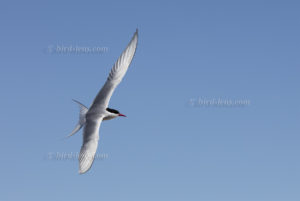 The bird commutes between the Arctic and Antarctic: The Arctic Tern (Sterna paradisaea) from the gull family does not grow forty centimeters long, but covers up to 90,000 kilometers a year.
The bird commutes between the Arctic and Antarctic: The Arctic Tern (Sterna paradisaea) from the gull family does not grow forty centimeters long, but covers up to 90,000 kilometers a year.
New findings on bird migration always open up exciting insights into the world of birds. How do birds manage their journey, often thousands of kilometers across seas and deserts?
Circling European Honey-buzzards (Pernis apivorus) in late summer, trumpeting Common Cranes (Grus grus) in the autumn sky, migrating Northern Lapwings (Vanellus vanellus) when winter returns or the arrival of the first Barn Swallow (Hirundo rustica) in March. The bird migration is not only a great experience for ornithologists every year. Bird migration research has blossomed – starting with ringing. Research now uses modern methods such as satellite telemetry, geolocators, radio telemetry and even genetic analysis of blood samples from captured birds in order to be able to determine the distribution area of their population.
In addition to a lot of precise information, ornithology also has blind spots. There are a total of around 10,000 bird species, of which at least 40 percent migrate. There are migration movements on all continents, in all directions, across deserts and oceans. Bar-headed Geese (Anser indicus) even fly over the Himalayas at an altitude of 9,000 meters asl. The migration from North America to Central and South America and from the Palearctic to Africa has been researched quite well. However, there is little data on the Palearctic-Asiatic migration. This may be due to the fact that birds are still not systematically ringed in the countries concerned. After the first marked individuals in Europe were discovered more than 100 years ago during the cold season in remote areas, theories such as that birds would hibernate could no longer be maintained.
The fact that a whole range of species fly in a certain direction at a certain time can be due to external factors – think cold snaps or acute food shortages – it can be genetically determined, or it can be due to a combination of both. Internal factors are the trigger when long-distance migrants leave their breeding grounds in the best weather and when there is a plentiful supply of food. This program is so precise that some species reach their final destination with a standard deviation of five days or less. Even birds caught as nestlings and then caged develop a so-called migratory restlessness at exactly the time when they would actually be out and about in the wild. They perch on the branch or on the ground and flap their wings. They always orientate themselves in the direction of their potential destination, for as long as the journey would normally take.
This so-called migration restlessness appears to be a very old trait. After all, it can still be found in African Stonechats (Saxicola torquatus), although they separated from their northern relatives at least a million years ago and are now resident birds. While the timing of the flight is controlled by an internal clock, birds orient themselves in space using the position of the sun, the starry sky and the earth’s magnetic field as a compass.
Bird-lens is primarily a website designed to meet the growing demand for high-quality photographs of the birds of the Western Palearctic. In order to satisfy the demand for top-quality photographs of rare bird species, Bird-Lens.com has also made targeted trips to distant places such as Asia, Africa and the Americas. All this in order to be able to take excellent photos of birds. The yield of pictures not only of rare Western Palearctic birds is very good. The beautiful action image of the blog is only a first impression, what you can find in behind the tab “Picture Shop” very soon. Just leave a message if bird-lens.com can serve with a picture.